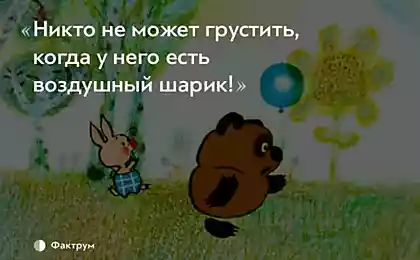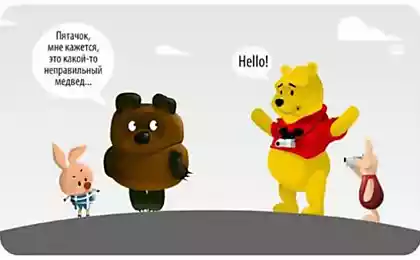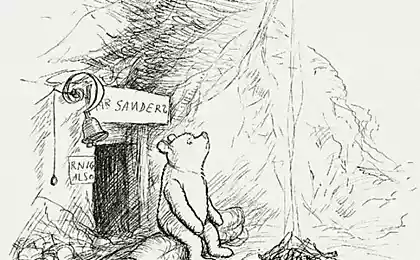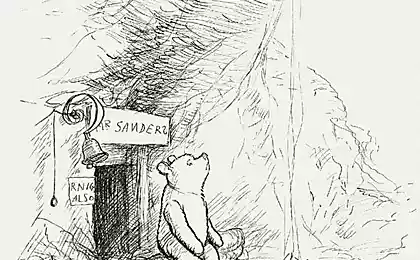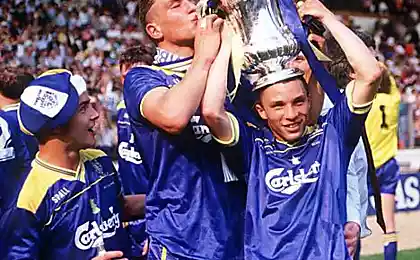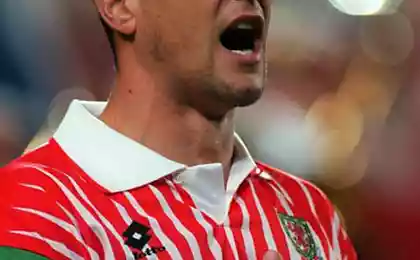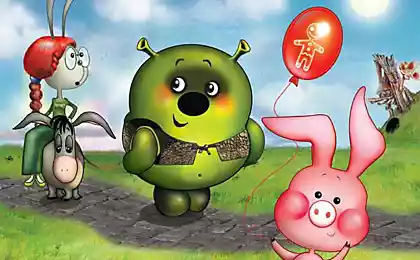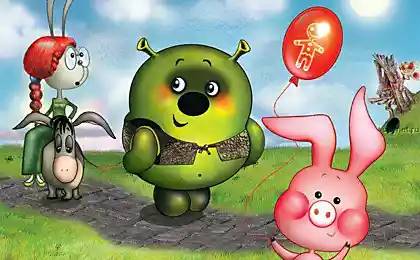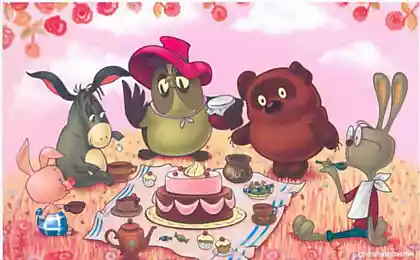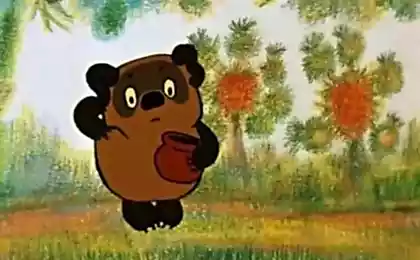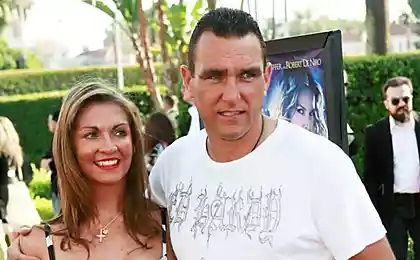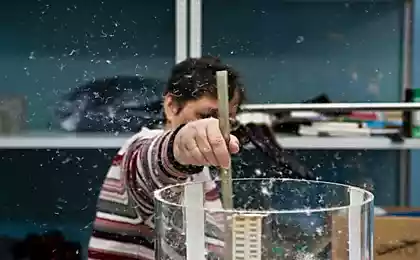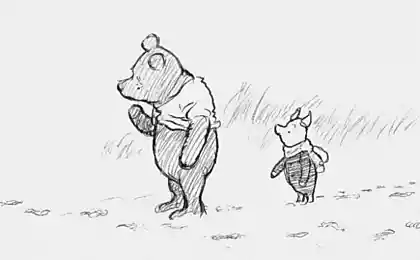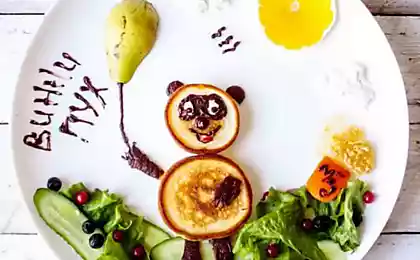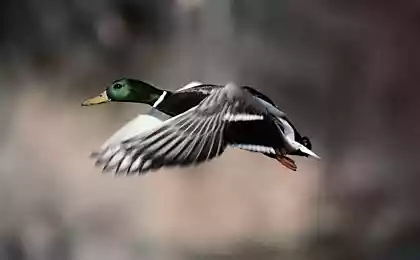812
About the divine nature of Winnie the Pooh (6 pictures)
The logical continuation of the post of curvature of the space-time continuum in the cartoon Winnie the Pooh from the same Comrade burrarum.
Then the words of the author:
Have you ever felt that the table where dinner Winnie the Pooh, Piglet and Rabbit some strange? It looks as though it wrong bees collected. After all, it would seem, according to the rules of perspective, the edge surface of the table, which is closer to the viewer to be longer, but it is further away - in short. That is, the cover should have a trapezoid shape whose base is at the bottom. In the cartoon the same table does have a trapezoid shape. Here are just painted it upside down. The long edge at the top and bottom short. What can not be surprised.
One would think that this is such a well de curve Rabbit table and all here. It is, of course, very educated, no doubt, but his legs appear to grow out of your ass. The explanatory table was not able to put together, collected as best he could. But it could not matter.
But do not waste incriminate Rabbit in Krivolap! It is better to look closely. The flat curve of the Rabbit, not only the table, but the carpet on which he stands! And the cupboard, from which he pulls out pots of honey, too, some strange.
Apparently Housing Rabbit generally characterized by a strange perspective
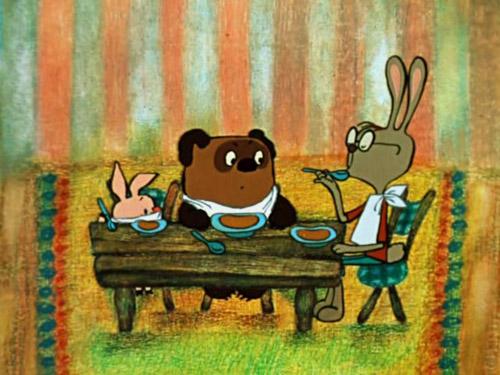
This "wrong" perspective is called feedback. And it is actively used mainly in the iconographic tradition. For example, one of the best examples:
In this icon of almost all objects are drawn in an equally strange term, as in Winnie the Pooh. Especially clearly seen in the "tables" to the left of the saint.

That, incidentally, is another illustration, forbidding stolen from Wikipedia, most clearly demonstrates the principle of reverse perspective:
In the case of the "correct" perspective lines converge at a point which lies in the "depth" of the picture. This is how we perceive things. In the case of reverse perspective, everything happens exactly the opposite - lines converge at a point which lies "outside" picture. This device has a symbolic meaning. Firstly, it is intended to show the ethereal essence of being, in which there are characters icons. And secondly, the convergence of the lines in the space of the viewer as it shows us the grace flows from the heavenly world to our world. So it goes. If anything, let him experts will correct me, if much lied.
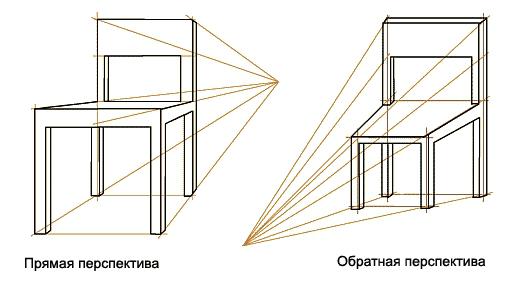
Thus the authors of the cartoon as a hint to us about the divine nature of Winnie the Pooh and his friends. To make allusion to the iconographic tradition is even more explicit, they did not even hesitate almost too blasphemous references to the Trinity Andrei Rublev:
It is easy to see the commonality of the two paintings.
Incidentally, composing the image, I made a kind of a scam, in order to achieve greater similarity. I flip the image horizontally. Actually Rabbit should sit on the right instead of the left. I comfort myself with the thought that this is a de focus specifically coined by the authors of the cartoon to deceive the vigilance of Soviet censorship. Seest case, children slip under the guise of religious obscurantism cartoon?
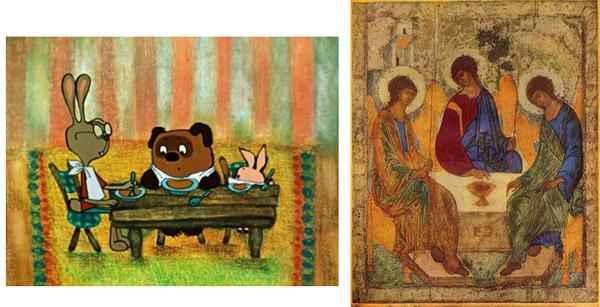
Incidentally, the reverse perspective is not unique to the house rabbit. Admire such as what looks like a bridge (and the trees on the horizon, too, harness):
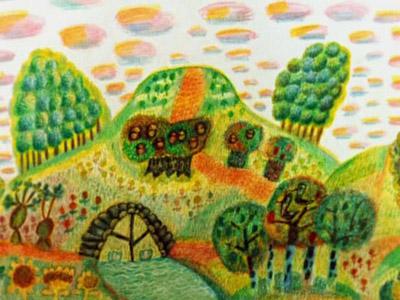
Also reverse perspective and references to Rublev in the cartoon can be traced, and other allusions to the divine essence of Winnie the Pooh.
For example, if you look closely watched cartoons, you could not help but notice that his characters are reflected in a mirror only when they need it. In all other cases, when they pass it, we do not see any reflection. Although it must be mind were present. By the way, Piglet, we do not see in the mirror if ever! Even the ears.
Here's an example. There Winnie the Pooh is in the same position in front of the mirror. In the first case (left), it is not visible in the mirror, and the second - on the right already seen! By the way, if you look at the animation frames with a mirror can be noted an interesting fact: in the mirror appears on the right and on the right is subsequently disappears, though Winnie the Pooh passes a mirror and this in theory can not be.
Indeed only the gods can afford such tricks!
And one more thing, "the way." Rug before the washbasin is not written in reverse perspective as a perspective (which is sometimes not quite correctly styled isometry, actually there is a diameter). This tradition is also characteristic of the iconography. For example, all of the same Trinity Rublev foot rest on the left is an angel reverse perspective, and at the right - axonometric.
via
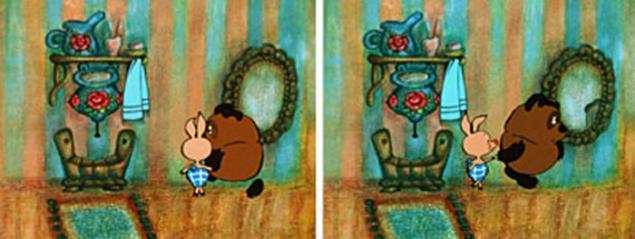
Source:
Then the words of the author:
Have you ever felt that the table where dinner Winnie the Pooh, Piglet and Rabbit some strange? It looks as though it wrong bees collected. After all, it would seem, according to the rules of perspective, the edge surface of the table, which is closer to the viewer to be longer, but it is further away - in short. That is, the cover should have a trapezoid shape whose base is at the bottom. In the cartoon the same table does have a trapezoid shape. Here are just painted it upside down. The long edge at the top and bottom short. What can not be surprised.
One would think that this is such a well de curve Rabbit table and all here. It is, of course, very educated, no doubt, but his legs appear to grow out of your ass. The explanatory table was not able to put together, collected as best he could. But it could not matter.
But do not waste incriminate Rabbit in Krivolap! It is better to look closely. The flat curve of the Rabbit, not only the table, but the carpet on which he stands! And the cupboard, from which he pulls out pots of honey, too, some strange.
Apparently Housing Rabbit generally characterized by a strange perspective

This "wrong" perspective is called feedback. And it is actively used mainly in the iconographic tradition. For example, one of the best examples:
In this icon of almost all objects are drawn in an equally strange term, as in Winnie the Pooh. Especially clearly seen in the "tables" to the left of the saint.

That, incidentally, is another illustration, forbidding stolen from Wikipedia, most clearly demonstrates the principle of reverse perspective:
In the case of the "correct" perspective lines converge at a point which lies in the "depth" of the picture. This is how we perceive things. In the case of reverse perspective, everything happens exactly the opposite - lines converge at a point which lies "outside" picture. This device has a symbolic meaning. Firstly, it is intended to show the ethereal essence of being, in which there are characters icons. And secondly, the convergence of the lines in the space of the viewer as it shows us the grace flows from the heavenly world to our world. So it goes. If anything, let him experts will correct me, if much lied.

Thus the authors of the cartoon as a hint to us about the divine nature of Winnie the Pooh and his friends. To make allusion to the iconographic tradition is even more explicit, they did not even hesitate almost too blasphemous references to the Trinity Andrei Rublev:
It is easy to see the commonality of the two paintings.
Incidentally, composing the image, I made a kind of a scam, in order to achieve greater similarity. I flip the image horizontally. Actually Rabbit should sit on the right instead of the left. I comfort myself with the thought that this is a de focus specifically coined by the authors of the cartoon to deceive the vigilance of Soviet censorship. Seest case, children slip under the guise of religious obscurantism cartoon?

Incidentally, the reverse perspective is not unique to the house rabbit. Admire such as what looks like a bridge (and the trees on the horizon, too, harness):

Also reverse perspective and references to Rublev in the cartoon can be traced, and other allusions to the divine essence of Winnie the Pooh.
For example, if you look closely watched cartoons, you could not help but notice that his characters are reflected in a mirror only when they need it. In all other cases, when they pass it, we do not see any reflection. Although it must be mind were present. By the way, Piglet, we do not see in the mirror if ever! Even the ears.
Here's an example. There Winnie the Pooh is in the same position in front of the mirror. In the first case (left), it is not visible in the mirror, and the second - on the right already seen! By the way, if you look at the animation frames with a mirror can be noted an interesting fact: in the mirror appears on the right and on the right is subsequently disappears, though Winnie the Pooh passes a mirror and this in theory can not be.
Indeed only the gods can afford such tricks!
And one more thing, "the way." Rug before the washbasin is not written in reverse perspective as a perspective (which is sometimes not quite correctly styled isometry, actually there is a diameter). This tradition is also characteristic of the iconography. For example, all of the same Trinity Rublev foot rest on the left is an angel reverse perspective, and at the right - axonometric.
via

Source:
